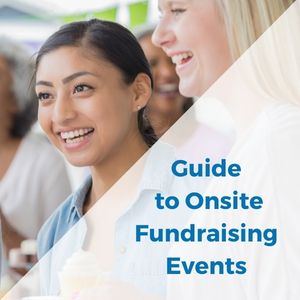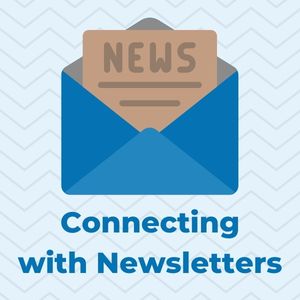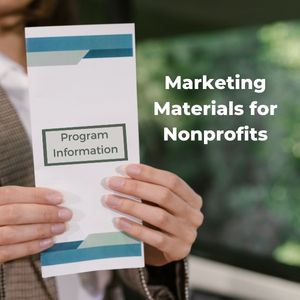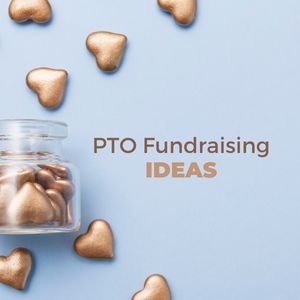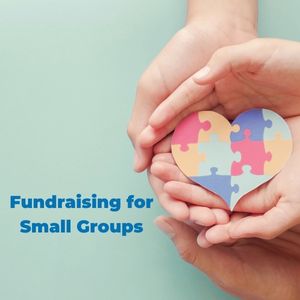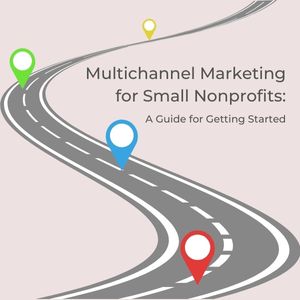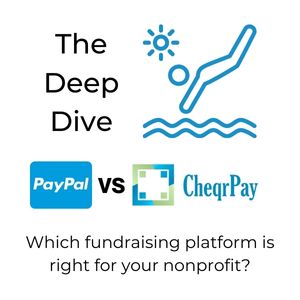
A small community nonprofit (Edina Give and Go) needed an alternative to their annual Spring fundraising event. This event is key to their success as it helps to fund summer programs for the students they support. In years past, the event was a fun community gathering showcasing all the ways the organization supports students in the district. But this year, due to COVID-19, there was no question, the event would have to be virtual. Given a limited budget and the constraints of a virtual event, the team got to work.
Get the Board On Board
The first thing they did was to engage their board members for brainstorming and support. There was concern that attendance may be lower than usual given the nature of a virtual event. Members were not sure that older patrons would attend online and zoom fatigue might keep others at bay. The staff and board agreed to set a conservative goal of $25,000 which would allow them to meet the needs of most of their students. Several Board members generously offered to fund a matching grant of $8,000 to incentivize giving. Board members and staff were dispatched to solicit sponsors.
Get the Word Out
Given the need in the community, failure was not an option. For that reason, the staff decided that using a multichannel approach for communication was necessary. They would use email, social media, and a direct mail component to promote the event. By integrating all three modes of communication, they were sure they could make a meaningful touch point with each one of their supporters prior to the event.
Multi-Channel Communication Timeline
The organization timed their communications to build excitement and momentum for giving:
- A “Save the Date” email was sent one month prior to the event.
- Two weeks prior to the event, another email was sent detailing news of the matching grant and telling of the Program Guide that would be arriving in their mail soon. Donors were encouraged to give immediately to help the organization secure 100% of the matching funds. This follow-on email was designed to create urgency, establish an expectation to watch for the Program Guide arriving by mail and remind supporters of the upcoming event.
- One week before the event, the Program Guide was sent to 300 supporters.
- Finally, emails were sent the morning of the event and an hour before the event as timely reminders for people to tune in.
The Event
The goal of the organization was to keep event costs to a minimum to maximize return. To keep things simple, a 30-minute event was held as a zoom meeting and was facilitated by one Board member and the Executive Director. They created a “red carpet” background using printed logos of all event sponsors in a mosaic behind the speakers. The Board member kicked things off with a brief welcome and an overview of the Event Guide. The Executive Director detailed accomplishments to date, event fundraising goals, overview of the summer program and sponsor recognition. The Board member closed out the show.
Printed Program
By sending out the printed program, the organization was sure to convey their message to all supporters regardless of event attendance. They strategically designed the Event Guide to evoke emotion and maximize giving. The elements of the program:
- Letter to the Community recapping prior year accomplishments, an overview of the organization mission and programs, and a look to what was needed to support students this summer.
- A Fun Bingo Board with terms event attendees would hear about like “Removing Barriers”, “Go Learn” and “800 students qualify”. It was an element of fun for those in attendance and a reminder to others of the content they would have heard.
- Giving Levels – the organization used CheqrPay as their event fundraising software which allowed them to create multiple campaigns with different giving levels. They created three different campaigns and strategically placed them in the Guide in descending order: Level Three ($500 – 1000), Level Two ($200 – $450) and Level One ($50 – 195). They dedicated one page in the Guide to each level and included examples of activities the specific dollar amounts would sponsor. For example: $500=16 hours of tutoring, $200=12 weeks of gymnastics, $50=instrument rental. They also included the campaign QR code on each page so that donors could scan to give with their mobile device directly from the Program Guide.
- Sponsor Recognition and Family Quotes – sponsor logos were included and interspersed throughout the program were quotes from families who had been supported by the organization acknowledging the impact on their lives.
The Result

Key Outcomes
- Pre-Event donations were driven by early email promotion of matching grant and Program Guide mailing.
- Event Giving facilitated by QR codes allowing donors to watch the program and give from their Guide using their mobile device.
- After-Event donations came in 19% from email and 81% from direct mail Event Guide.
- Total donations for the event came in 32% from email and 68% from direct mail Event Guide.
Conclusion
By using a multichannel approach, this organization was able to generate donations from 27% of the population invited to the event. They were able to keep up the momentum for giving before, during AND after the event. The early email with news of the board sponsored match drew donations from people prior to the program. However, most donations were given using the Event Program (scanning the QR code in the program) to either give while watching the program or after the program. The Event Program helped to make the short program interactive. The direct mail piece served as a reminder for donors to give even after the event was over.


